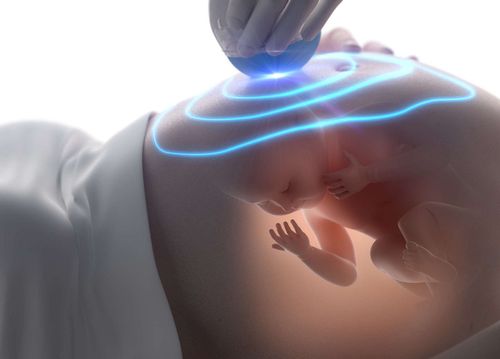This is an automatically translated article.
The article is professionally consulted by Master, Doctor Truong Thanh Tam - Pediatrician - Department of Pediatrics - Neonatology - Vinmec Danang International General Hospital.1. Assess the infant's condition to consider neonatal resuscitation
The Apgar score is often used to assess the condition of a baby immediately after birth. Assessment by Apgar score was performed at 1 minute, 5 minutes and 10 minutes after birth on the indicators of heart rate, respiration, muscle tone, reflexes and skin color.Heart rate: Listen to the heart , count for 30 seconds (can count for 6 seconds and then add a zero after the count result); Respiratory: Observe at the same time as heart rate counting, visual assessment or stethoscope if the child is breathing shallow; Muscle tone: The degree of contraction when straightening the limb; Reflex: The child's response to irritation of the nostrils or the soles of the feet; Skin color: Pink, purple or pale white.

| Nội dung | 0 | 1 | 2 |
| Nhịp tim | Không có | <100 lần/phút | >100 lần/phút |
| Hô hấp | Không thở | Thở yếu, khóc yếu | Khóc to |
| Trương lực cơ | Không | + | ++ |
| Phản xạ | Không | + | ++ |
| Màu da | Tím tái toàn thân hoặc trắng | Tím đầu chi, quanh môi | Hồng hào toàn thân |
Apgar score 8 - 10: A normal index, no need for resuscitation. Just clear the baby's airway, stimulate it through touch, keep warm and watch the baby's transition closely; Apgar index 4 - 7 points: Children with mild asphyxia, need resuscitation breathing; Apgar index 0 - 3 points: The child is severely asphyxiated and needs resuscitation and cardiopulmonary resuscitation. Note: In the Apgar table, the heart rate criterion comes first. If there is no pulse that requires immediate neonatal resuscitation, do not continue to evaluate other items to avoid missing the best time of resuscitation.
Trắc nghiệm: Thế nào là trẻ sơ sinh đủ tháng?
Đặc điểm bên ngoài của trẻ sơ sinh đủ tháng được thể hiện qua các tiêu chuẩn như: Cân nặng, chiều dài và hình thể. Theo dõi bài trắc nghiệm dưới đây sẽ giúp các bậc cha mẹ hiểu thế nào là trẻ sơ sinh đủ tháng, qua đó có thể đánh giá tổng trạng sức khỏe và sự phát triển của bé yêu nhà mình.The following content is prepared under supervision of Thạc sĩ, Bác sĩ y khoa, Ma Văn Thấm , Nhi , Phòng khám Đa khoa Quốc tế Vinmec Dương Đông(Phú Quốc)
2. Procedure for neonatal resuscitation
Medical staff do not need to pat the baby's back, but simply rub the infant's back about 2-3 times while drying is enough to stimulate the baby's breathing. Neonatal resuscitation maneuvers are as follows:2.1 Open the airway Keep the baby's head in a neutral position to help open the airway; Do not regularly aspirate viscous sputum, but only aspirate sputum if the amniotic fluid is mixed with meconium, the child does not cry, does not move limbs. In the case of simple amniotic fluid, only suction when the baby's mouth and nose have a lot of secretions. At the same time, pay attention to only aspirating the child's mouth, nose and pharynx in the area where the secretions are visible. Do not suck deeply into the child's throat because this can cause apnea and slow heart rate. 2.2 Respiratory support Choose the right mask size, fit snugly over the child's mouth and nose. Specifically, children under 2.5kg choose a mask of size 0 and children of normal weight use a mask of size 1; Squeeze the ball through the mask with the reserve bag, the frequency of squeezing the ball is about 40 - 60 times/minute. Note when squeezing the ball to make sure the baby's chest rises with each squeeze. In very young children, care should be taken not to let the thorax move too much to avoid the risk of pneumothorax.

Master. Truong Thanh Tam has 15 years of experience in pediatrics and especially has a lot of experience in hematology, resuscitation and pediatric oncology. The doctor has participated in many national and international scientific conferences on pediatrics and participated in many short-term training courses and was certified as "Pediatric Core Instructor", by Hue University of Medicine and Pharmacy. grant. Currently, she is a Pediatrician at the Department of Pediatrics - Neonatology - Vinmec Da Nang International General Hospital.
Please dial HOTLINE for more information or register for an appointment HERE. Download MyVinmec app to make appointments faster and to manage your bookings easily.
SEE MOREResuscitation in asphyxiated newborns Who is born naturally without an episiotomy? Asphyxia at birth: Dangerous complications















